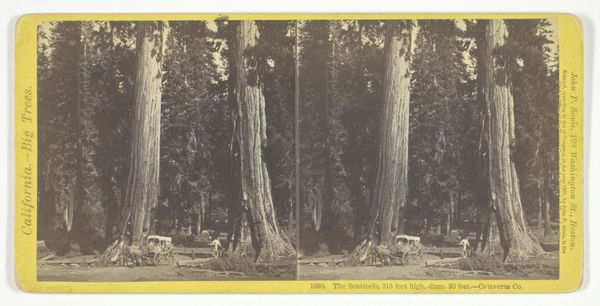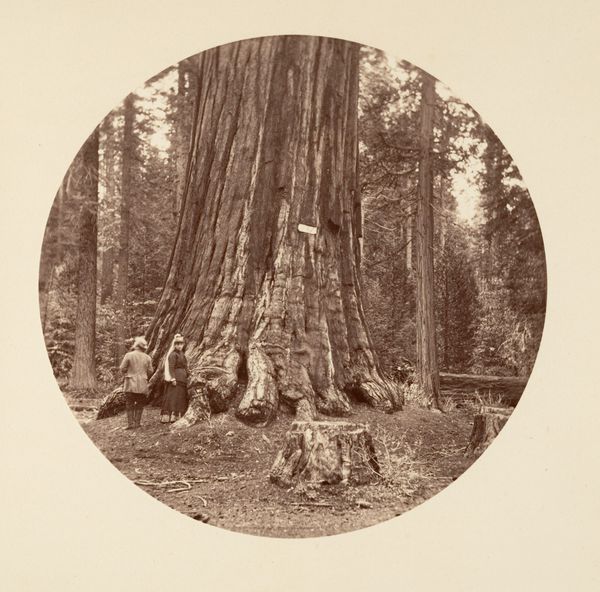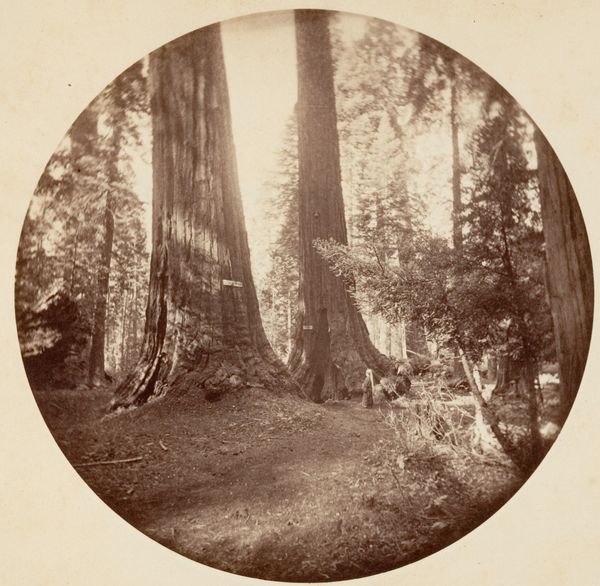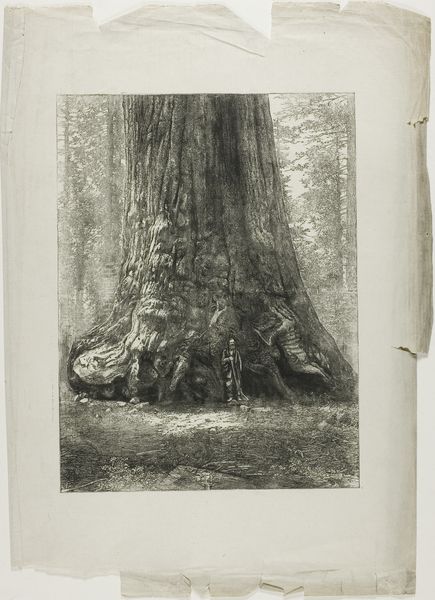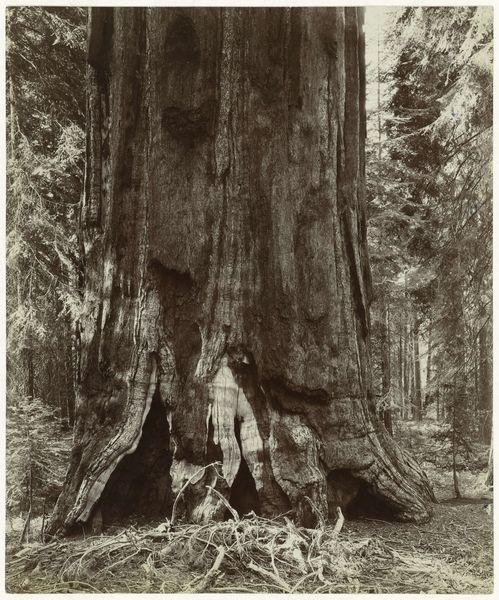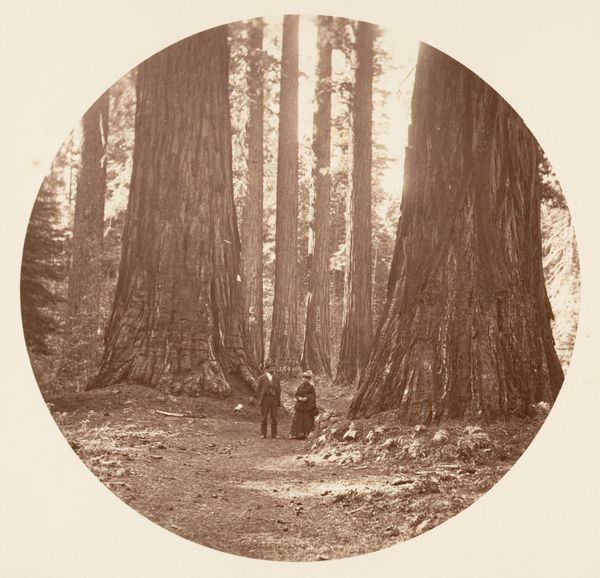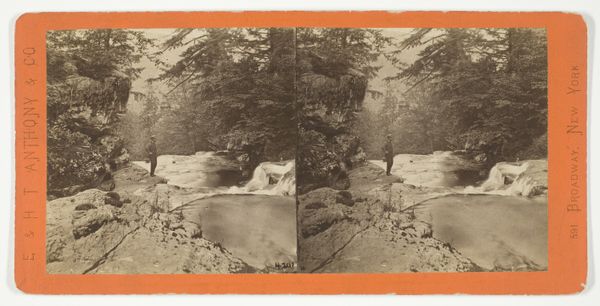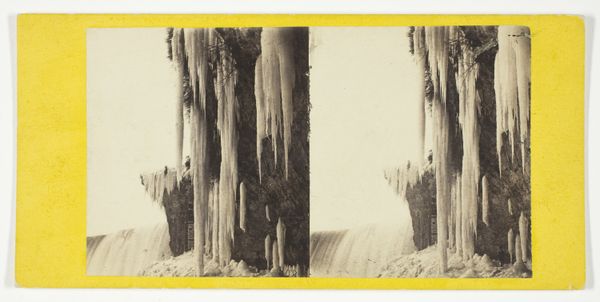
print, daguerreotype, photography
# print
#
landscape
#
daguerreotype
#
photography
Dimensions: 8 ×. 7.5 cm (each image); 8.6 c 17.5 cm (card)
Copyright: Public Domain
Curator: This stereoscopic daguerreotype, known as "Key Stone State", was created by Anthony and Company between 1870 and 1871. It's part of the Art Institute of Chicago's collection. Editor: The overwhelming feeling I get is one of insignificance, which is probably the point. These men dwarfed by these giants—the scale is breathtaking. Curator: Precisely. These early photographs of the American West played a crucial role in shaping perceptions of national identity, particularly concerning Manifest Destiny. We must also consider the dispossession of indigenous populations connected with these perceptions. The deliberate framing of tiny humans set against the backdrop of majestic, seemingly untouched nature helped fuel expansionist ideology. Editor: It's interesting how the photographer employs a well-known visual trope of pairing "man and nature" but amplifies it. Trees often symbolize wisdom, growth, interconnectedness. Here, their colossal size also connotes power and longevity. Note how dark the base of the trees appears, giving way to light. Perhaps commenting on knowledge in darkness eventually coming to light? Curator: Absolutely, and this use of nature as a backdrop prompts us to consider who gets to access this space and what that access represents. Tourism to see the big trees in California became highly commodified. How do we reconcile this promotion of nature with the violent histories of that era, particularly in California? We need to foreground the historical erasure involved in creating an ostensibly pristine vision of nature. Editor: The stereo format adds another layer. It offers an illusion of depth, almost immersing the viewer into the scene. It reinforces the monumental presence of the trees. Beyond documentary, there's a feeling this picture creates about humankind's relationship with the eternal and the temporal. Curator: And the role of the camera as a tool for not only seeing, but also for participating in historical erasures is of paramount importance. To analyze this image demands a nuanced understanding of photographic history, gender studies, and colonial and postcolonial theory. Editor: I see the photograph differently now, knowing the complexities of that time. Curator: Indeed, art asks us to question everything and push the boundaries of our understanding.
Comments
No comments
Be the first to comment and join the conversation on the ultimate creative platform.
